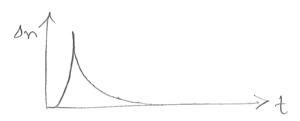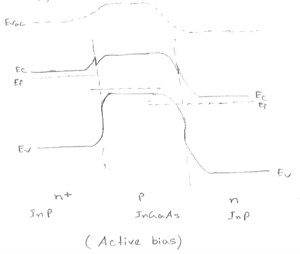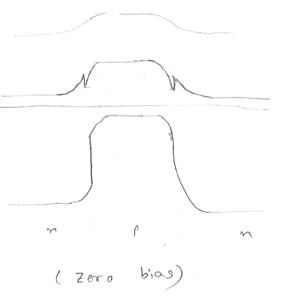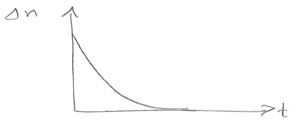MICROELECTRONICS and NANOTECHNOLOGY (MN)
Question 2: Junction Devices
August 2013
Questions
All questions are in this link
Solutions of all questions
1) Two effects: i) Kirk effect or base pushout ii) Current crowding
------------------------------------------------------------------------------------
2) $ Eg(InP) > Eg(InGaAs) $
So; InP is in emitter and collector.
- $ \beta $ increases as:
$ \begin{align*} \beta &=\frac{D_n}{D_p}\cdot\frac{W_E}{W_B}\cdot\frac{n_{iB}^2}{n_{iE}^2}\cdot\frac{B_E}{N_B}\\ &\approx\frac{n_{iB}^2}{n_{iE}^2}\cdot\frac{B_E}{N_B}\cdot\frac{V_{th}}{v_s} \end{align*} $ $ \frac{n_{iB}^2}{n_{iE}^2} = e^{\triangle Eg/kT} $
- So huge improvement
- $ V_{cb,br} $ increases as $ V_{cb,br}\approx\frac{3}{2} $ Eg collector
- $ f_{max} $ increases
$ f_{max}^{-1}\approx f_T^{-1} = \bigg(\frac{w_B^2}{2D_n}+\frac{w_{BC}}{2v_{sat}}\bigg)+\frac{kT}{qSe}[C_{jBC}+C_{jBE}] $ here; $ w_B\downarrow I_C\uparrow C_J\downarrow $ all leads to $ f_T\uparrow $
- high current effect reduces
- $ V_cesat $ (??)
------------------------------------------------------------------------------------
3)a)$ \begin{align*} V_a&=0\\ \therefore E&=0 \end{align*} $
$ \therefore n_p(x,t) = \frac{N}{\sqrt{4\pi D_nt}}exp\bigg(\frac{-x^2}{4D_nt}-\frac{t}{\tau_n}\bigg)+n_{p0} $
At $ x=0 $
2 unknowns $ \to D_n,\tau_n $ selecting 2 specific times and using the excess carrier can find $ D_n $ and $ \tau_n $.
At $ x=X $; initially no excess carrier.

b) For applied field; decay will be much quicker.
------------------------------------------------------------------------------------




